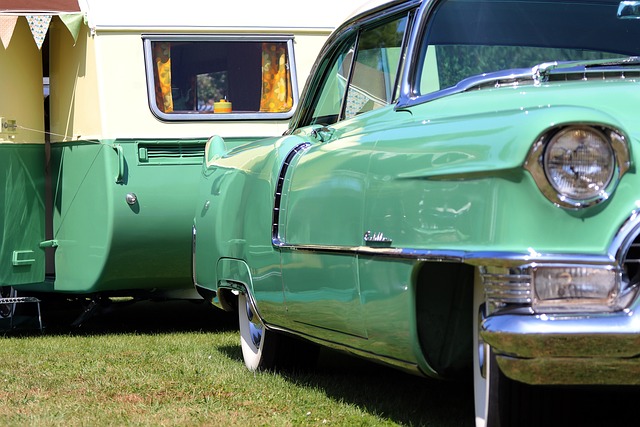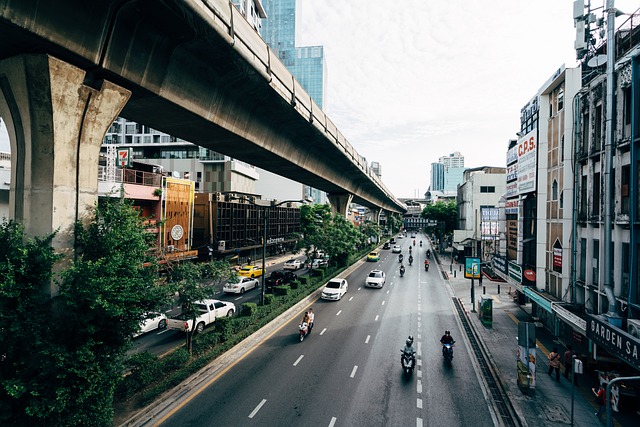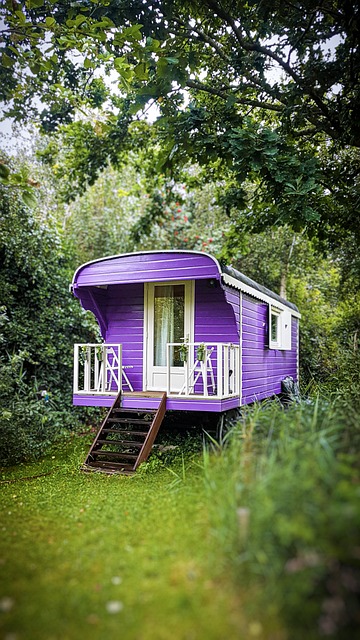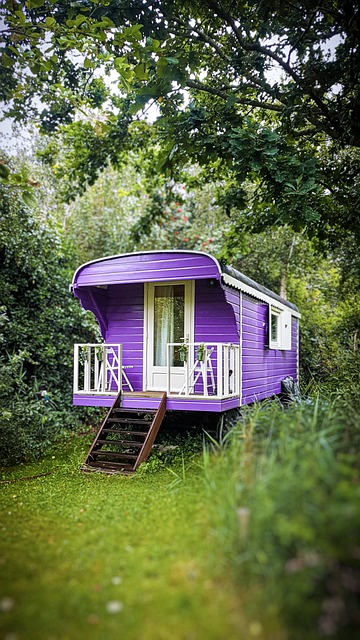Before setting off on your caravan holiday, it's crucial to conduct a thorough safety inspection, ensuring your vehicle's tires, brakes, and gas systems are in top condition. Check that all safety devices like smoke and carbon monoxide detectors are functioning properly, and verify your insurance covers various scenarios specific to caravan use. Familiarize yourself with your caravan's manual for insights into its safety features. Pack a first aid kit, essential tools, and spare parts, along with route planning that includes identifying rest stops. A well-prepared caravan journey requires careful consideration of the vehicle's size and handling characteristics, adherence to driving laws for caravans, and an understanding of the increased responsibilities and risks associated with holiday traffic. Strategic packing for the destination's climate, security measures for valuables, and emergency supplies are also essential. By prioritizing safety, preparedness, and following best practices for navigation and handling, you can ensure a comfortable and secure caravan travel experience.
Embarking on a holiday journey in your best caravan offers an idyllic escape, yet ensuring safety is paramount. This article guides you through the essential steps for safe caravan travel during peak seasons. From meticulous preparation to astute route planning, we cover everything from essential maintenance checks to smart packing for comfort and security, with a focus on understanding caravan-specific driving nuances and staying vigilant amidst holiday traffic. Whether you’re a seasoned caravanner or new to the experience, these top tips will enhance your journey, ensuring your caravan adventure is memorable for all the right reasons.
- Preparing Your Best Caravan for Holiday Travel Safety
- Route Planning and Risk Assessment for Safer Caravan Journeys
- Essential Maintenance Checks to Ensure Caravan Roadworthiness
- Packing Smart for Comfort, Security, and Emergency Preparedness
- Understanding the Rules of the Road: Caravan-Specific Driving Tips
- Staying Alert and Responsive: Best Practices for Caravan Drivers During Holiday Traffic
Preparing Your Best Caravan for Holiday Travel Safety

When preparing your best caravan for holiday travel safety, it’s crucial to conduct a thorough inspection before hitting the road. Safety checks should include the integrity of the tires, brake systems, and gas supplies. Ensure that all tires are properly inflated to the recommended pressure and that there are no signs of wear or damage. The braking system must be inspected for responsiveness and fluid levels, as a well-maintained braking system is vital for safe caravan handling, especially when towing on unfamiliar roads. Additionally, verify that all gas appliances are functioning correctly with the proper gas supply and that there are no leaks. Gas safety is paramount, so ensure your carbon monoxide and smoke detectors are in good working order.
Provision of adequate insurance coverage tailored for caravan use is another essential aspect of preparation. This coverage should account for various scenarios, including accidental damage, theft, or third-party liability. Furthermore, it’s wise to familiarize yourself with the best caravan’s manual and understand its features and safety mechanisms. This knowledge can be invaluable during unexpected situations on your journey. Pack a comprehensive first aid kit, and don’t forget to include essential tools and spare parts for minor repairs en route. Lastly, plan your route in advance, considering rest stops and overnight locations. This planning will facilitate a safer and more enjoyable travel experience, allowing you to make the most of your holiday season caravan adventure with peace of mind.
Route Planning and Risk Assessment for Safer Caravan Journeys

When embarking on a caravan adventure during holiday seasons, meticulous route planning and comprehensive risk assessment are paramount for ensuring a safe and enjoyable journey. The best caravan routes consider factors such as road conditions, weather patterns, and rest stop availability, which can vary significantly depending on the time of year and regional differences. By utilizing online resources and maps tailored for RVs, travelers can identify the most suitable paths that minimize exposure to high-traffic areas or challenging terrains, especially during peak holiday periods when roads might be congested.
In addition to selecting the optimal route, conducting a thorough risk assessment is crucial. This involves evaluating potential hazards along the way, such as steep gradients, narrow lanes, and areas prone to extreme weather. It’s advisable to check for any roadworks or closures in advance, as these can cause unexpected delays or detours. Safety checks on the caravan itself are also a critical aspect of risk assessment. Ensuring that all systems, including brakes, lights, and gas supplies, are functioning optimally will reduce the likelihood of mechanical issues arising during your journey. By combining strategic route planning with proactive risk assessment, travelers in caravans can navigate their holiday travels with greater confidence and peace of mind, making the most of their best caravan experience.
Essential Maintenance Checks to Ensure Caravan Roadworthiness

When planning a holiday in your caravan, ensuring that it is roadworthy is paramount for a safe and enjoyable journey. Prior to embarking on your travels, conducting thorough maintenance checks is one of the best caravan practices you can adopt. Begin by inspecting the caravan’s braking system, including the brake pads and discs, to ensure they are in good working order. This is crucial for safe stopping distances, especially when towing on unfamiliar roads or in varied weather conditions. Tires should be examined for wear and inflated to the manufacturer’s recommended pressure to maintain grip and stability during transit.
Additionally, check the caravan’s lighting and electrical systems. All lights—brakelights, indicators, number plate lights, and reverse lights—should function correctly. A fully charged leisure battery is essential for powering these lights as well as other electrical components within your caravan. Don’t forget to test smoke and carbon monoxide alarms; their proper functioning is vital for early detection of potential hazards that could arise during your journey. Lastly, verify the gas appliances are working safely, with no leaks or damaged fittings. By meticulously going through these maintenance checks, you can help prevent common issues on the road, ensuring a reliable and secure caravan experience throughout the holiday season.
Packing Smart for Comfort, Security, and Emergency Preparedness

When embarking on a caravan travel adventure during the holiday seasons, packing smartly is paramount for comfort, security, and emergency preparedness. Firstly, consider the climate and terrain of your destination. Pack appropriate clothing and gear that will protect you from the elements, ensuring you have layers for varied conditions. Include essentials such as a first-aid kit, with supplies tailored to potential injuries or allergic reactions. Additionally, ensure you have a well-stocked toolkit for minor repairs or adjustments to your caravan.
For security, pack valuables in a concealed, secure place within the caravan, and always keep personal identification and important documents on your person or in a readily accessible spot. It’s advisable to have a comprehensive inventory list of all items within your caravan, which can aid in quicker recovery should any belongings go missing. Furthermore, include emergency supplies like a flashlight with fresh batteries, extra food and water, and a reliable means of communication, such as a fully charged mobile phone with an up-to-date map or GPS app. The best caravans are those that are prepared for the unexpected, so take the time to pack thoughtfully and ensure your travel experience is both enjoyable and safe.
Understanding the Rules of the Road: Caravan-Specific Driving Tips

When embarking on a holiday with your caravan, it’s imperative to be well-versed in the rules of the road tailored for such vehicles. Caravans, due to their size and weight, require different handling than standard cars, and understanding these nuances is crucial for safe travel. Firstly, drivers should familiarize themselves with the dimensions of their caravan to anticipate how it will react on the road compared to a regular vehicle. This includes being aware of turning circles, overhangs, and the overall length, which can significantly alter your driving dynamics. It’s also essential to check the legal requirements for caravans, such as lighting, braking systems, and registration details, ensuring compliance with local traffic laws.
Moreover, selecting the best caravan for your journey involves considering not just the load capacity but also the towing capabilities of your vehicle. Proper weight distribution is vital; a well-balanced caravan will handle more predictably on the road. Additionally, drivers should practice maneuvers in a safe, open area before hitting the highway. This acclimatization period allows for adjustments to mirrors, understanding blind spots, and getting used to the increased stopping distances required for caravans. By adhering to these caravan-specific driving tips and embracing the best practices for handling such vehicles, travelers can enhance their safety and enjoy a more enjoyable holiday experience. Regular checks of tire pressure and condition, as well as ensuring that all security features are functioning optimally, will further contribute to a trouble-free journey.
Staying Alert and Responsive: Best Practices for Caravan Drivers During Holiday Traffic

Navigating holiday traffic in a caravan requires heightened alertness and responsiveness from drivers due to increased vehicular presence and potential for congestion. To ensure safe travel, it’s crucial to maintain a clear view of the road ahead by avoiding the blind spots created by larger vehicles. Best practices include planning your route in advance to avoid peak traffic times and high-traffic areas when possible. Regular breaks are essential to prevent fatigue; driver fatigue is a significant risk during long journeys, especially during busy holiday periods. Additionally, drivers should be well-rested before setting out and should plan for frequent rest stops.
Caravan drivers must also stay updated on road conditions and weather forecasts, as these can significantly impact travel safety and smoothness. Utilising real-time traffic updates and having a contingency plan for adverse weather or unexpected delays will help maintain progress without compromising safety. The best caravan drivers are those who anticipate the actions of other road users and react promptly to changing conditions, ensuring a secure and enjoyable holiday journey for all on board. Always remember to keep a safe following distance, as stopping distances are considerably longer for caravans than for cars alone. By adhering to these best practices, drivers can navigate the challenges of holiday traffic with confidence and ease.
When embarking on holiday travels with your best caravan, safety should be top of mind. By meticulously preparing your vehicle, planning your route with caution, conducting thorough maintenance checks, packing thoughtfully for all contingencies, adhering to road regulations, and remaining vigilant behind the wheel, you can navigate the roads confidently and enhance your journey’s enjoyment. Remember, a well-prepared caravan is not just about the destination but also ensures peace of mind en route. Safe travels this holiday season!
